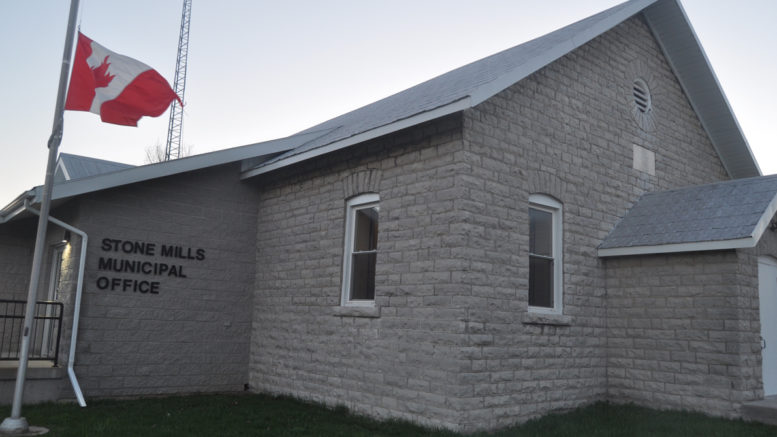Reserves continue upward trend, debt load well below provincial average
Adam Bramburger
Beaver Staff
On Monday evening Stone Mills Township received a clean audit of its 2017 financial statements from KPMG that showed the municipality was in good stead approaching the final year of council’s term.
The township finished with an operating surplus of $219,877, contributing to net financial assets of $3,302,187. KPMG representative Katie Mahone told councillors that is a healthy position.
“It shows you have been able to meet your liabilities, but you also have money available for any future obligations that may arise,” she said.
On paper, as of Dec. 31 last year, the township had $1,331,354 in accounts receivable — up $926,000 from the previous year, but Mahone said that shouldn’t be cause for alarm. The township had yet to receive funds from Lennox and Addington County for an invoice for road work of $774,000 and it was also awaiting HST funding from the federal and provincial governments worth about $175,000.
The township had a lower percentage of taxes receivable on its books than in 2016, at 10.58 per cent, or $1,198,300, which Mahone said is low to moderate in comparison to other municipalities.
According to Mahone, the township is also doing well with respect to long-term debt. With just over $1 million owing on two projects, Stone Mills has an average debt per household of $276. The provincial average for municipalities is in the neighbourhood of $1,400.
Last year, the valuation of the township’s tangible capital assets — which includes roads, bridges, buildings, equipment and land — decorated by $103,800 as amortization and disposal calculations exceeded the $1,777,514 it invested in tangible capital assets last year. While that total is the most Stone Mills has invested in five years, Mahone said when one considers the acquisition of a medical centre in Tamworth for $299,000, it is very close to on par with 2016.
Other notable capital additions include the purchase of a front-end loader and sweeper, about $150,000 worth of land and building improvements, and costs associated with gravel and surface treatment on roads. Roads represent about 47 per cent of the tangible capital assets cost, which Mahone said is consistent with previous years.
In total, Stone Mills has capital assets valued at $38,806,242. The consumption rate — a calculation that identifies how quickly those assets are depreciating is at 45 per cent. A ratio around 50 is considered great, while Mahone said “when you get to 75-80 per cent you have to look at your position.”
Municipal reserves, set aside by council for specific projects, and reserve funds, externally mandated for specific uses, totalled $4,983,941. That represents 56 per cent of the township’s operating budget, which is around the provincial average.
Councillor Wanda LaLande saw the findings about the healthy reserve balances and wondered aloud if the township might be able to reduce its tax levy in the future. She said she understood the township’s tax burden was coming down in comparison with surrounding similar-sized municipalities, a statement treasurer Christina Beaushaw confirmed. LaLande said she hoped to push the trend farther.
“I’d like to see them on par,” she said.
The audit also provided a breakdown of 2017 expenses. Transportation accounted for 55.1 per cent of township spending. Policing cost 12.3 per cent, fire, 7.2 per cent, and recreation and culture, seven per cent. Environmental expenses cost 4.9 per cent, protection 1.6 per cent, and conservation authority contributions one per cent. Planning and development and libraries accounted for less than a per cent each.
Mahone concluded by commending township staff on their involvement in the audit process.
Councillor Martha Embury commended Beaushaw on that and on Mahone’s observation that no internal financial control weaknesses were identified during the auditing process.

